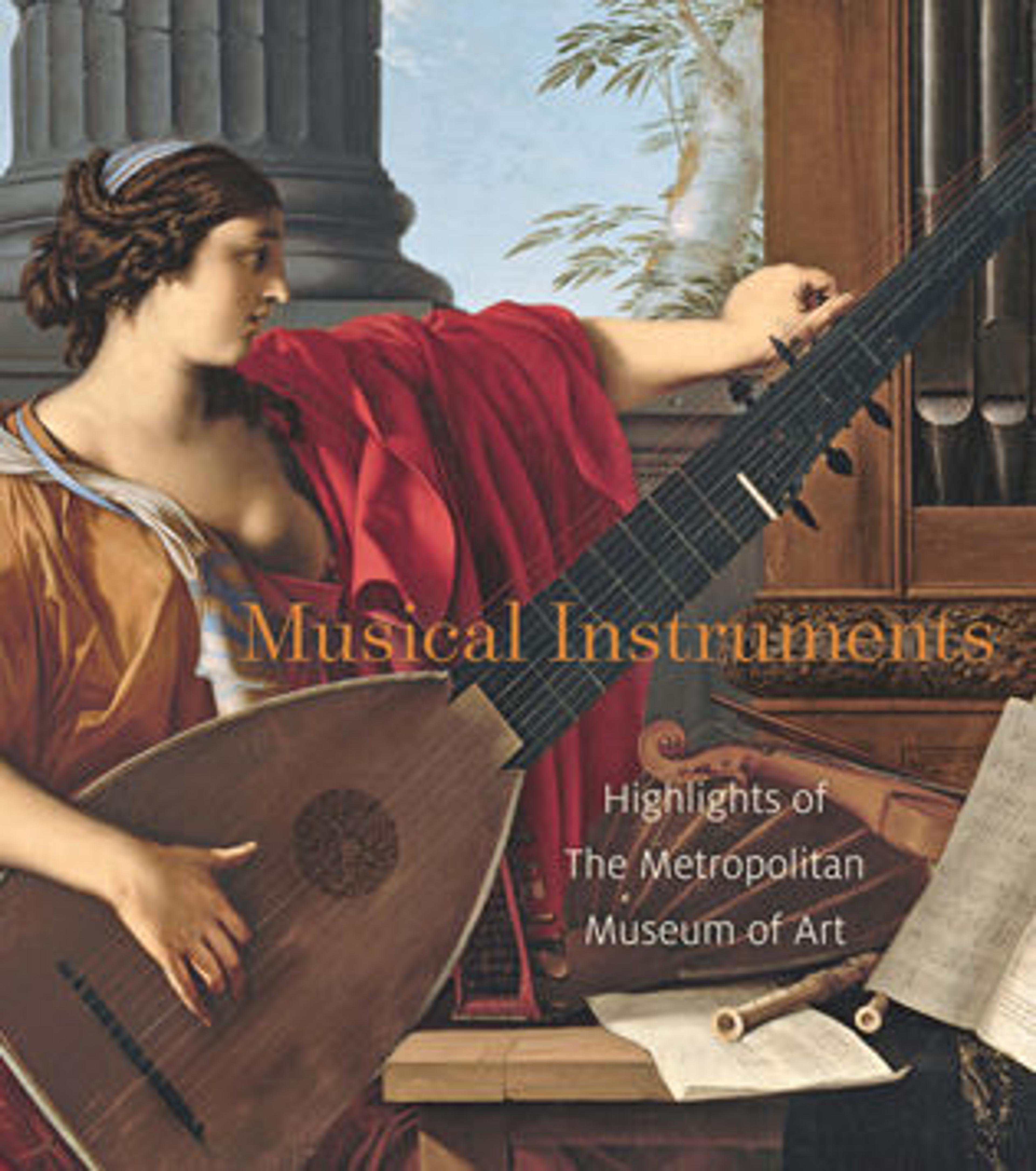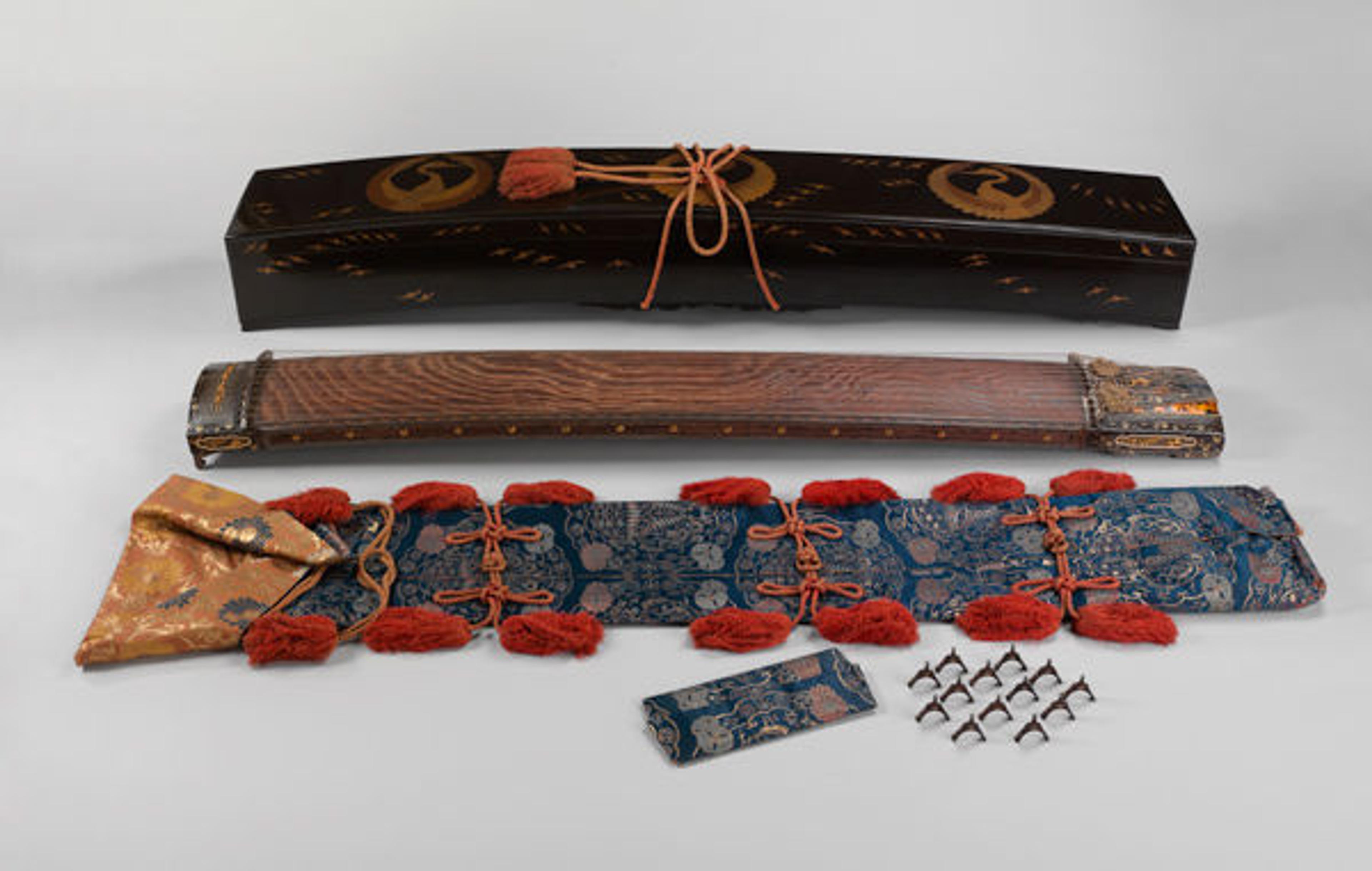From the Ancient to the Present: Musical Instruments at the Met
«The Department of Musical Instruments is pleased to announce the publication of a new book, Musical Instruments: Highlights of The Metropolitan Museum of Art. This insightful catalogue features more than one hundred extraordinary musical instruments, from ancient cultures to the present, created by gifted artists from across the globe.»

Left: Musical Instruments: Highlights of The Metropolitan Museum of Art by J. Kenneth Moore, Jayson Kerr Dobney, and E. Bradley Strauchen-Scherer features 166 color illustrations and is available at The Met Store and MetPublications.
The publication includes iconic pieces from the Museum's collection, including the oldest piano in the world, built by Bartolomeo Cristofori in Florence in 1720.

Bartolomeo Cristofori (Italian, 1655–1731). Grand piano, 1720. Various materials. The Metropolitan Museum of Art, New York, The Crosby Brown Collection of Musical Instruments, 1889 (89.4.1219)
Cristofori's invention features a hammer mechanism to strike the strings, as opposed to the jacks on a harpsichord, which pluck them. The instrument also uses an escapement mechanism that separates the hammer from the key that propels it, allowing the hammer to quickly drop away from the string and thus dampen its vibration. Cristofori achieved a successful version of his piano around 1700, but the Met's 1720 instrument is the earliest of the three surviving pianos produced by him.
Dongsok Shin performs the Sonata in D minor, K. 9, by Domenico Scarlatti (1685–1757) on the Museum's Cristofori piano. Recorded May 13, 2013
Also included in the publication is the extraordinary early seventeenth-century koto made in the workshop of Gotō Yūjō, a tour de force of Japanese decorative and musical arts.

Koto, early 17th century. Japan. Metalwork by Goto Teijo, ninth-generation Gotō master, Japan (1603–1673); Workshop of Gotō Yūjō (Japanese, ca. 1440–1512, first-generation Gotō master). Various woods, ivory and tortoiseshell inlays, gold and silver inlays, metalwork. The Metropolitan Museum of Art, New York, Purchase, Amati Gifts, 2007 (2007.194a–f)
In 1600, during the war that led to the unification of Japan, Tanabe Castle came under siege by fifteen thousand men. The shogun sent emissaries to save the keeper of the castle and, according to tradition, this koto was presented in gratitude for that rescue. Decorated with inlaid colored woods, ivory, gold, and silver, a team of craftsmen worked for one thousand days to create the instrument. Purchased by the Museum in 2007 and featured in an 82nd & Fifth episode, the koto is kept in an early nineteenth-century lacquered storage box.
The collection of musical instruments also includes masterpieces created by twentieth-century builders, such as a 1993 archtop guitar by American guitar maker James D'Aquisto.

James D'Aquisto (American, 1935–1995). Archtop guitar, 1993. American. Spruce, maple, ebony; W. 17 in. The Metropolitan Museum of Art, New York, Gift of Steve Miller, 2012 (2012.246)
Born in Brooklyn, New York, D'Aquisto learned the craft of archtop guitar making from John D'Angelico in a workshop in Manhattan's Little Italy neighborhood. D'Aquisto would later revolutionize the design of the traditional archtop guitar by introducing modern designs and an expanded color palette for varnishes. The rock-and-roll musician Steve Miller, a friend of D'Aquisto, gifted the guitar to the Museum in 2012.
Guitarist Julian Lage performs his own arrangement of "Freight Train" on the Museum's D'Aquisto guitar. Recorded October 9, 2012
Related Links
Of Note: "On Acquiring a Rare Early Seventeenth-Century Koto" (April 13, 2015)
Learn more about the Department of Musical Instruments in the multimedia feature A Harmonious Ensemble: Musical Instruments at the Metropolitan Museum, 1884–2014, a comprehensive account of the history of the Department of Musical Instruments written by Rebecca Lindsey.
Jayson Dobney
Jayson Dobney is the Frederick P. Rose Curator in Charge in the Department of Musical Instruments.